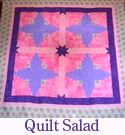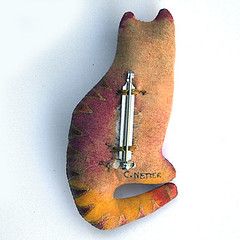 |
| Honey Extraction |
This past Sunday, August 10, 2014, we took our frames of honey from our backyard beehives to be extracted down at
Dakota Bees in Wheat Ridge, Colorado. We'd removed the frames from the supers the day before and stored them in the back of car so the bees couldn't get to them and take the honey back to their hives.
Taking the supers and honey frames off the hives was pretty exciting in itself as the bees don't really like their hard earned winter food supply being taken from them. We smoked the bees a little to calm them down and used Bee Quick to chase them down out of the supers and into the lower deep boxes. It worked sort of well, but would've worked better if the weather had been warmer and sunnier. As it was, we got 3 supers and 25 frames full of honey off of the hives. Most of this came off the two older hives. We didn't get much of anything off the 3 hives that are new this year, but we didn't expect to.
 |
| Frame Before Uncapping |
 |
| Frame After Uncapping |
We headed over to Dakota Bees in the morning with our frames. Greg showed us how to use a heat gun to uncap the honey cells on the frames. This worked very well for most of the frames, the heat quickly popping the tops of the caps off of the honey. The heat gun doesn't heat up the honey, but heats the air gap under the cell cap, popping it off. For the few cells it didn't work on, we used a honey pick to open up the cells.
 |
| 12 Frame Extractor |
 |
| Extractor and Honey Bucket |
Next, we loaded up the large extractor with the frames and spun the honey out of the cells. The extractor is basically a large centrifuge, pulling the honey out of the cells with centrifugal force and then letting it drip down the walls of the extractor and out the spigot at the bottom, where it then goes into our honey bucket.
 |
| Bucket of Honey! |
Chris took a video of this process.
After we got all our honey extracted, we headed home to put the honey into jars for permanent storage. We washed a bunch of brand new pint jars and some half pints (they mail easier than full pints) and filled them up from the brand new 5 gallon pail with a honey gate on it. Filling the jars by ladelling it out would have been much messier. Now we have enough honey to last us a very long time.
 |
| Bucket with Honey Gate |
 |
| Honey! |





















